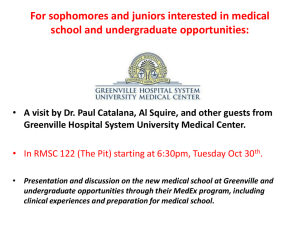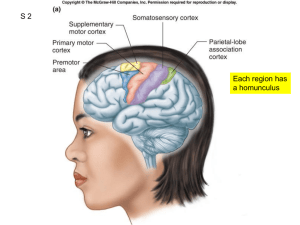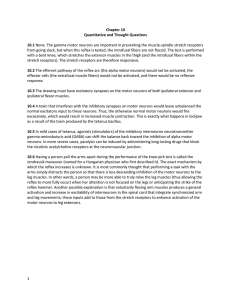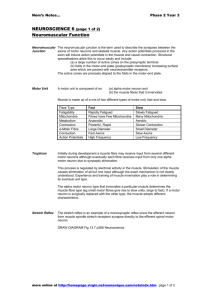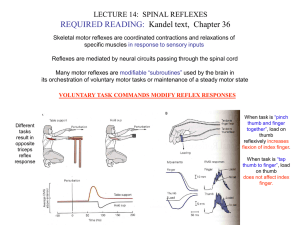Questions for entire chapter.
advertisement
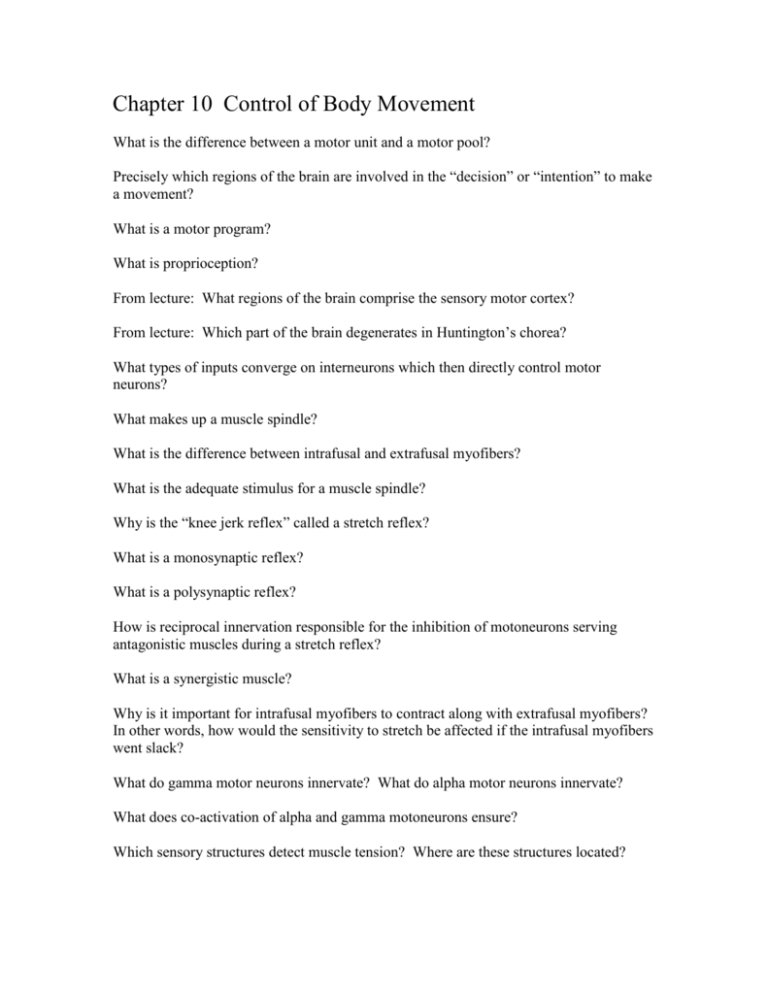
Chapter 10 Control of Body Movement What is the difference between a motor unit and a motor pool? Precisely which regions of the brain are involved in the “decision” or “intention” to make a movement? What is a motor program? What is proprioception? From lecture: What regions of the brain comprise the sensory motor cortex? From lecture: Which part of the brain degenerates in Huntington’s chorea? What types of inputs converge on interneurons which then directly control motor neurons? What makes up a muscle spindle? What is the difference between intrafusal and extrafusal myofibers? What is the adequate stimulus for a muscle spindle? Why is the “knee jerk reflex” called a stretch reflex? What is a monosynaptic reflex? What is a polysynaptic reflex? How is reciprocal innervation responsible for the inhibition of motoneurons serving antagonistic muscles during a stretch reflex? What is a synergistic muscle? Why is it important for intrafusal myofibers to contract along with extrafusal myofibers? In other words, how would the sensitivity to stretch be affected if the intrafusal myofibers went slack? What do gamma motor neurons innervate? What do alpha motor neurons innervate? What does co-activation of alpha and gamma motoneurons ensure? Which sensory structures detect muscle tension? Where are these structures located? How does activity in Golgi tendon organs affect motoneurons serving that muscle? motoneurons of antagonistic muscles? Beginning with the delivery of a painful stimulus to the hand, describe the withdrawal reflex, being sure to mention how motoneurons of flexors and extensors will be affected? Suppose a person is doing push-ups and suddenly there is a sharp pain in the left palm. Describe the components of the crossed extensor reflex. In which lobe of the cerebrum are the premotor area, primary motor cortex, and supplementary motor cortex located? What is meant by “somatotopy?” Define akinesia and bradykinesia. What is Parkinsonism and what are several possible treatments? What brain region is notoriously involved? What role does the cerebellum have in the execution of movements while those movements are being produced? Which is characteristic of cerebellar disease: resting tremor or intentional tremor? Which part of the brain is involved in the “learning” of motor programs in response to practice, such as playing a musical instrument or mastering a sport such as racquetball? Where are the cell bodies of neurons of the corticospinal tract? Where to their axons terminate? What are synonyms for the corticospinal tract? What is the corticobulbar pathway and what does it control? What deficits are expected in a person whose corticospinal tract has been damaged? What is a synonym for brainstem pathways? What types of muscle contractions are mainly the result of activity in brainstem pathways?
